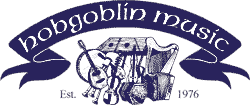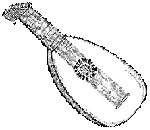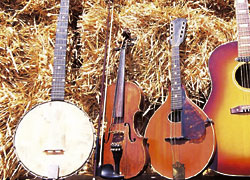
| THE HOBGOBLIN INFO SOURCE | |||
| HOBGOBLIN INDEX PAGE | HOBGOBLIN INFO INDEX | CATALOGUE CONTENTS | FRETS ONLINE SALES | SECONDHAND PRICES |
| Fretted Instument FAQ | ||||
 |
ON THIS PAGE: Under Construction! Oud and Lute Balalaika Instruments from China Instruments from Latin America Instruments from Iberia RELATED PAGES: Stringed Instrument Care String Advice Page (soon) Tunings & Gauges |
 | ||
|
© Copyright Hobgoblin Music 1983, 2011. This text may be freely distributed in whole or in part so long as the copyright holder is clearly acknowledged. This page covers instruments we commonly see in the Hobgoblin shops 1: LUTES Oud and LuteThe Egyptian Ud or Oud is the precursor of all modern lutes. The name of several instruments come from the Ud too. Al Ud = A Lute, also the Laud from Spain. The Oud has around 11 nylon or gut strings and no frets. Turkish ouds are slightly smaller and tuned G,D,A,E,B,F# while the arabic ones have a slightly larger body and are usually tuned G,A,B,E,A,D. Usully Uds have a fixed bridge as do lutes, Iraqi style Ud has a floating bridge with the strings going to the tail. .The renaissance lutes usually had 13 strings in 7 courses with gut frets, and were delicate lightweight instruments. Later baroque period lutes were heavier more cumbersome instruments with usually 15 strings in 8 courses, but often more, and sometimes sympathetic strings running alonstide the neck as in the arch lute or theorbo. BalalaikaThe Balalaika is a triangular bowl backed lute from Russia. The Balalaika family includes six sizes of instrument; Piccolo, Prima, Sekunda, Alto. Bass and Contrabass- the Prima being the most common. The Balalaika usually has 3 strings tuned E-E-A. Although this is the "classic" tuning, some players tune G-B-D, the same as the top three strings of a Russian Guitar, or E-A-D, like the Domra- A similar Russian instrument. Prior to the developments made by Vasily Vasilievich Andreyev (a 19th century Russian musician) Balalaika players used a "folk" tuning; D-F#-A, and it is likely that other tunings existed as well. Nowdays, although all of these tunings have been or are in use, it is generally agreed that E-E-A is the standard tuning for the Prima Balalaika. Russia and many other Slavic speaking countries, Turkey and those in Europe once ruled by Turkey use instruments with similar tunings. Russian Domra, Croatian Brac, Baglama, Saz and many more. Instruments from China
The Pipa, a pear chaped instrument with scalloped frets and four strings is one of the oldest, dating back over 2000 years. The design has been influenced by the Oud. It has a carved bowl back, frets on the top and a fixed bridge lute style. The Ruan is very popular in China and has a round moon shaped bode and again four strings and scalloped frets. This one has a floating mandolin type bridge with tailpiece. Instruments from Latin America
Under Construction!
We commonly see Charango with carved wooden or Armadillo shell back, and 10 nylon strings, Tres, three stinged guitar, Cuatro, 4 stringed guitar, Tiple which is like a ukelele but with double strings top and bottom, and triple strings on the middle 2 courses, and Vihuela another small guitar. We also stock a Cuatro de Puerto Rico which has 10 strings and not 4 as you might expect - traditionally it would be tuned in 4 courses 2, 3, 3, 2 as per tiple. Instruments from Iberia
under construction!
We comonly see Bandurria, a short necked pear shaped flat backed lute not unlike a flat backed mandolin. It has 12 strings and takes parts in Spanish music that would be taken by Mandolin in Italy. The Laud is very much the same having 12 strings but with a longer neck and bigger bosy and could be compared to a Mandola. The Gitarra or Portuguese Guitar comes from Portugal and particularly from the island of Madeira. It has 12 strings on a strongly curved fingerboard, a teardrop chaped body with a slight bowl to the back. The most visible feature is the fan head tuner. It is almost identical to the English Guitar of the 18th century in England. The Gitarra or Fado Guitar is used primarily to accompany Fado singers of nautical ballads.
Back to the Top of the Page |